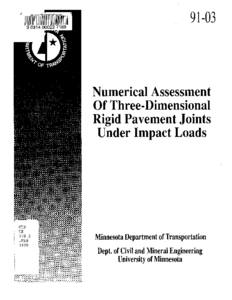Numerical Assessment Of Three-Dimensional Rigid Pavement Joints Under Impact Loads
Creator
Date Created
1990-08
Report Number
91-03
Description
Mitigating Concrete Aggregate Problems in Minnesota
Date Created
1997
Report Number
2004-46
Description



